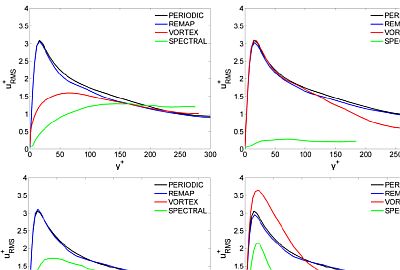
Implementation of a remap boundary
condition for LES applications in Fluent
Lampitella Paolo - Politecnico di Milano (Italy)
Mereu Riccardo - Politecnico di Milano (Italy)
Inzoli Fabio - Politecnico di Milano (Italy)
Colombo Emanuela - Politecnico di Milano (Italy)

PRESENTATION
Abstract
LES and other scale resolving simulation approaches are increasingly becoming a viable alternative for smallmiddle scale industrial applications, especially those in which unsteadiness and/or multi scale interactions are the main flow driving mechanisms (e.g., aeroacoustics, combustion instabilities). This viability has generally improved along with the availability of dedicated numerical/modelling techniques inside commercial CFD solvers, like ANSYS/Fluent. Among these, the methods for the generation of a proper inflow boundary condition have great relevance either because of their absolute effects in scale resolving simulations either because of the differences that separate them from the classical methods used in RANS/URANS computations.
Inlet methods for LES belong to one of two different categories: synthetic methods or precursor simulation methods. The former, which use stochastic techniques to provide velocity fluctuations at inlets starting from prescribed mean and Root Mean Squared (RMS) velocity profiles, are usually cited as more flexible and more cheap than the former and two different versions of them are available in the Fluent code. However, besides their own deficiencies, these methods are strongly dependent on the specification of proper mean and RMS profiles at inflow and require a spatial development region to adapt the flow to the current grid resolution and computational settings; also, the newly adapted flow can be very different from the prescribed one. Precursor simulation methods, in contrast, use an additional simulation to let velocity fluctuations properly develop in accordance with the current computational settings and “remap” them to the inlet of the main computational domain. While this approach requires additional computational resources to accommodate the precursor simulation, no development region is required and precise flow settings can be achieved. Both methods have their own advantages and disadvantages but, despite the availability of all the required data structures, the precursor simulation method is not currently available in the Fluent solver. The aim of the present work is to show the main details of the parallel implementation of a remap boundary condition in Fluent trough its User Defined Functions capabilities. The correctness of the implementation and the benefits of the method are assessed in the LES of turbulent flows in ducts with square and circular cross sections. The implemented remap is 18% faster than the best available alternative method but without any spatial development region. This roughly compensates the additional cost of the precursor simulation and makes it a viable alternative to prescribe proper LES inflow conditions.
